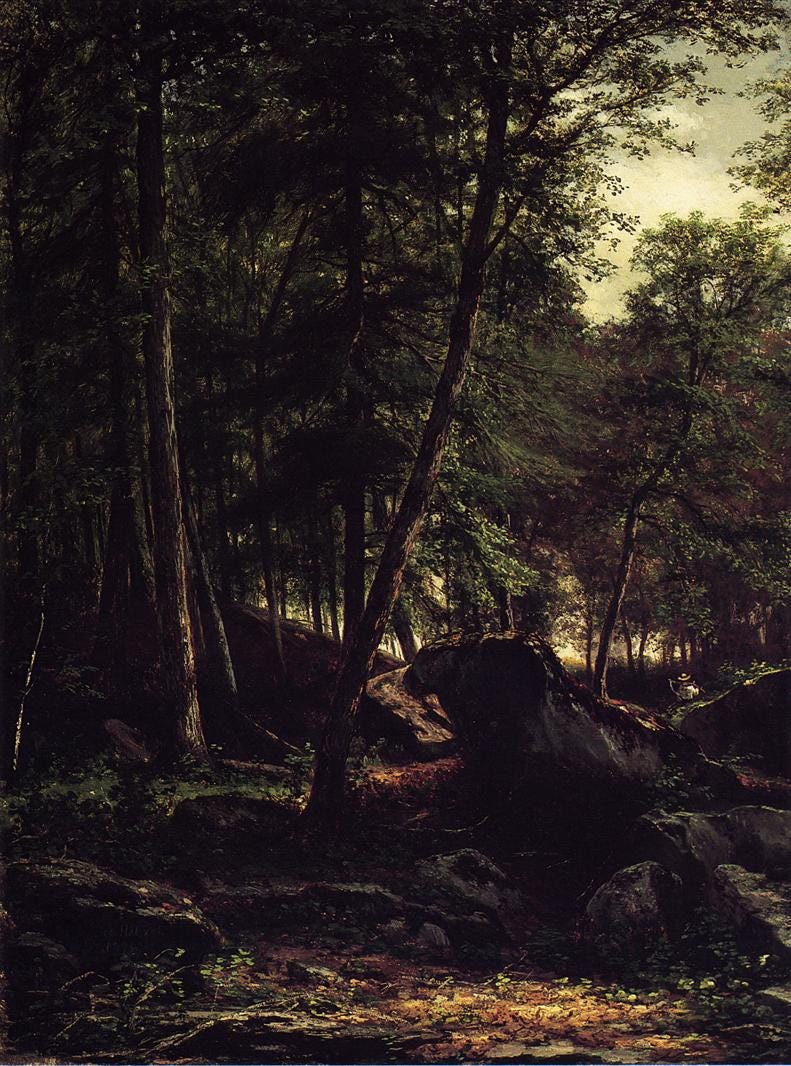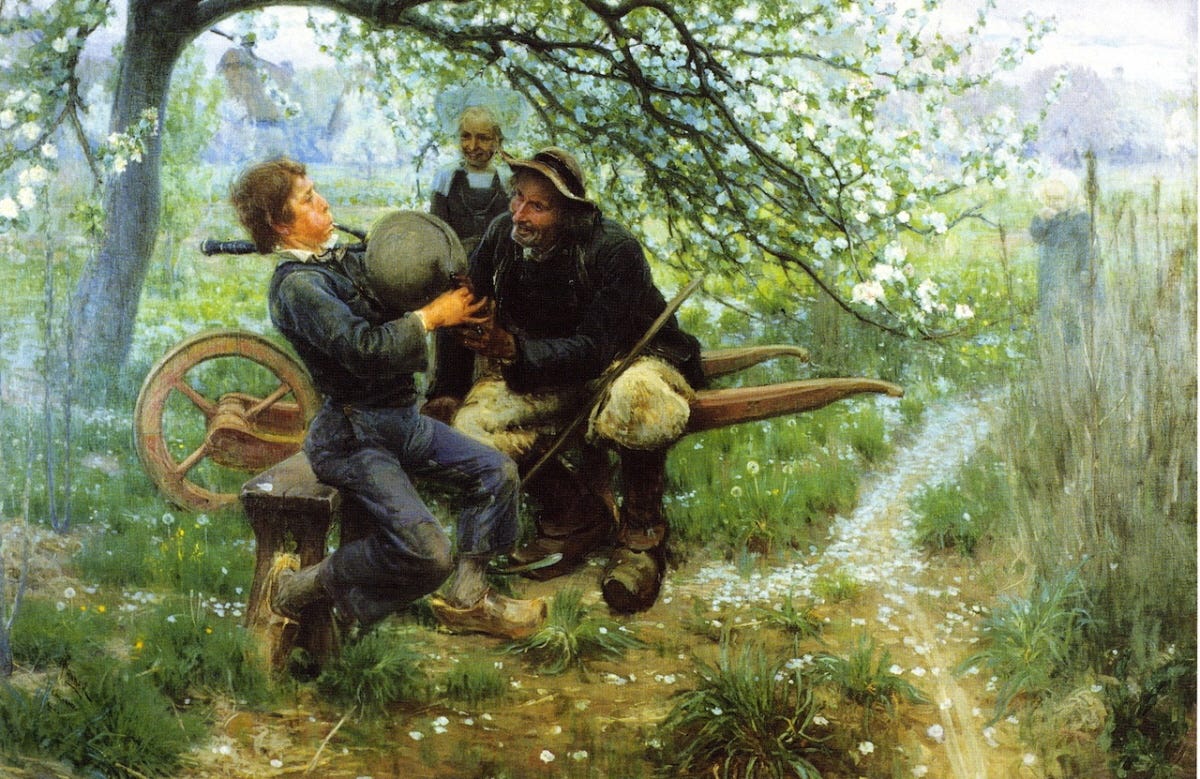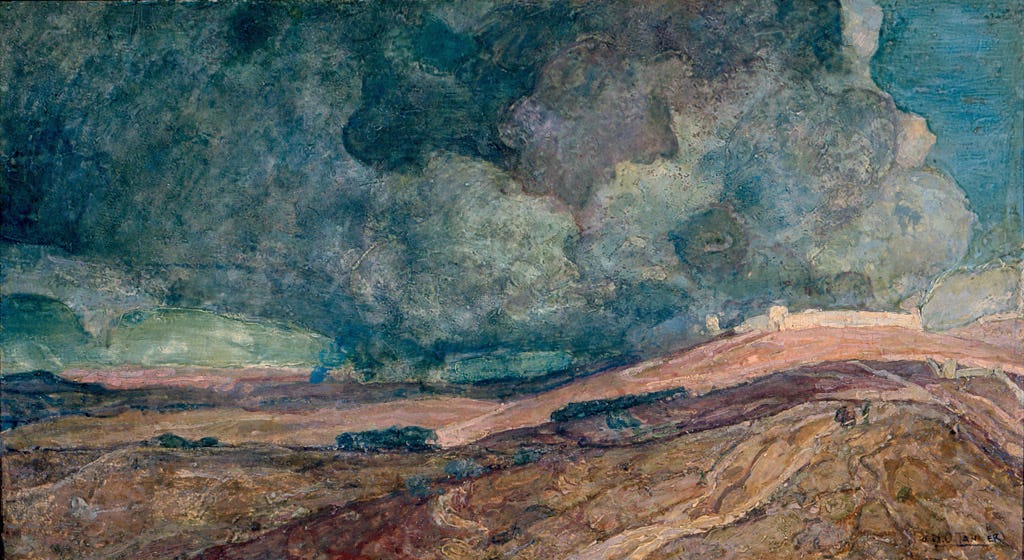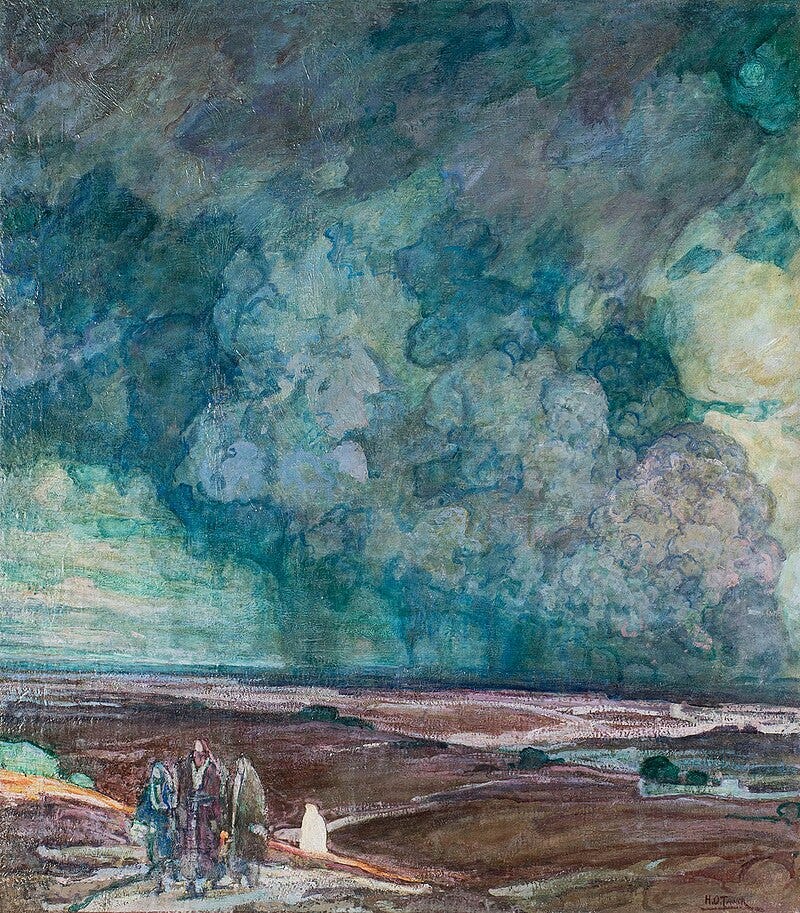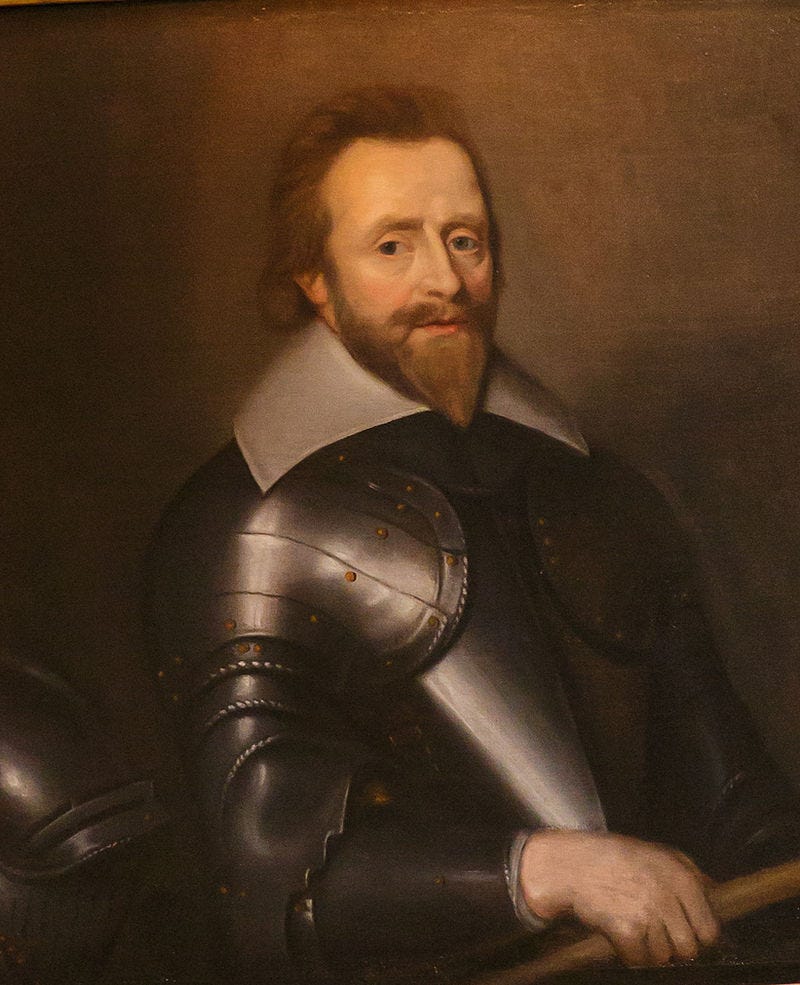This post will be Pennsylvania-leaning, since I got a lot of this from a little investigation into PA art I did a while back. There’s an art school in Philadelphia, that’s what a lot of this comes from. Each piece of art comes with a small bit of commentary by me. That can be ignored, that is mostly for me to get some experience writing
Appalachian Landscape with Figure Carrying a Scythe by George Hetzel, 1875 (excuse the line at the bottom)
I have seen this exact kind of landscape many times in life, in Cub Scouts and Boy Scouts. I have waged pretend wars in forests like these. Innumerable gun-shaped sticks were found in these battlefields. I have a love for the variety of the landscape. The roots and the rocks form stairs, the leaves and dirt and sticks a carpet, the trees walls and archways. The trees tilt left and right in their yearning for sunlight to metabolize, as can be seen in the center of the painting, forming one of those “archways”. The topographic maps are not boring. Parts are steep, some are less steep. You can see this in the painting, you have at least 3 or 4 different heights, and those aren’t even too far away. Traversing this land is really an adventure. And we see in the distance, the adventurer, presumably a farmer, hinting at an area of flatness obscured by the landscape.
First Fruits by John Valentine Haidt, circa. 1760.
I don’t like this painting. Aside from its poor preservation, it seems proto-shitlib. Something about it. I guess I put it here for that reason, and for its historical importance. I don’t think I need to explain the meaning here. This painting is displayed at the Moravian settlement/college in Bethlehem, PA, which I’ve been to. Moravians are descended from Jan Hus, but aren’t really the same thing, confessional Hussites just became Lutheran, while Moravians were heavily influenced by Pietism and Count Zinzendorf. They have done much missionary work, but I fear the church at home has all decayed into what most mainline churches have, with maybe less extremity, as the missionary work still continues. Zinzendorf actually permitted female pastors, but this was done away with after his death, so they frame it as going back to his vision. Moravian seem to be like a more Christian version of Quakers in their attitudes. We’ll get to Quakers at some point in this series.
The Bagpipe Lesson by Henry Ossawa Tanner, 1893
This painting was my profile picture here on Substack at the start. I chose it because it depicts a culture that forms part of my own lineage. Well, I THOUGHT it did, but no, it’s Breton. My ancestors didn’t even play bagpipes! It’s still a good painting
Destruction of Sodom and Gomorrah by Henry Ossawa Tanner, 1929-30
Sodom and Gomorrah, 1920
These paintings are years apart from one another, but are basically variations of one another. The first being a wider landscape, while the second is smaller, with Lot’s family more prominent and a divine/angel figure behind them as they flee from the destroyed cities. Both show the smoke plumes dissipating into the blue air. I find both to be striking images, which is why I made the more square one the icon for this page from the very start.
Sir Charles Coote, 1st Baronet of Castle Cuffe by Cornelis Janssens van Ceulen, ca. 1630
This painting is not American at all. It depicts Sir Charles Coote, who is most known for massacring Irish Catholics, notably Friar Peter O’Higgins, who was later beatified by Catholics, and actually saved Protestant lives during previous bouts of sectarian violence. He also might be my 12th great-grandfather (there’s one link that I’ve begun to call into question). And I think that’s kind of neat. So I made it my new profile picture. This isn’t an endorsement of his actions, except maybe in a jokey way. I figured that I should have some European pieces in the American Gallery, as America is a product of Europe. In the future, I will keep it to just one per article, but I figured I should start by covering all the paintings I’ve used on here previously, and with most of Henry Ossawa Tanner’s paintings being made in Paris, there isn’t as much American-made art in this installment, but I’ll allow it just this once.


